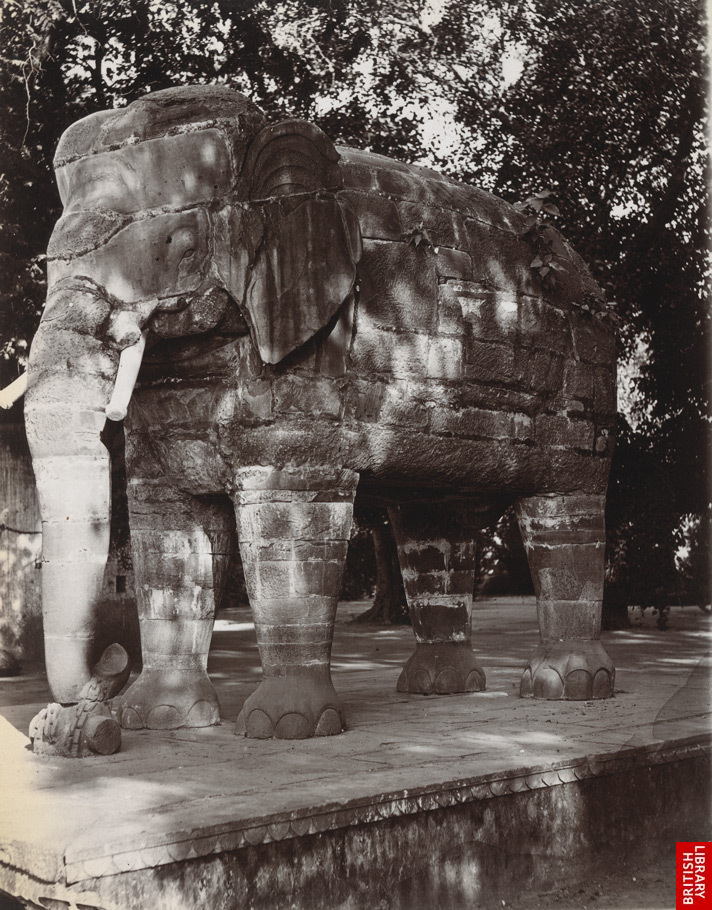

*Stone
elephant near the Palace, Delhi; a photo by Joseph David Beglar, 1870's*
(BL);
also: *Statues
of the riders of the stone elephants, Delhi* [*Beglar
1870's 2*]

The Red Fort's Delhi Gate, an albumen photo from the 1880's (with the elephants gone)
Source: ebay, Nov. 2005
*A gelatin silver photo, c.1900, with the elephants back*
Source: ebay, Nov. 2007
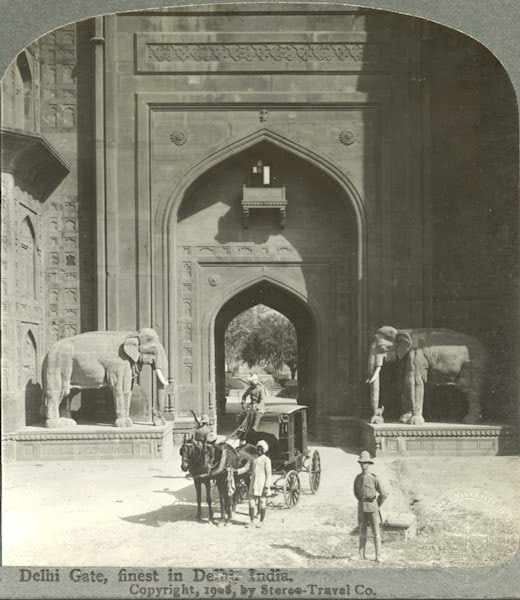
*"Delhi Gate, finest in Delhi," 1908* (Ames Library)
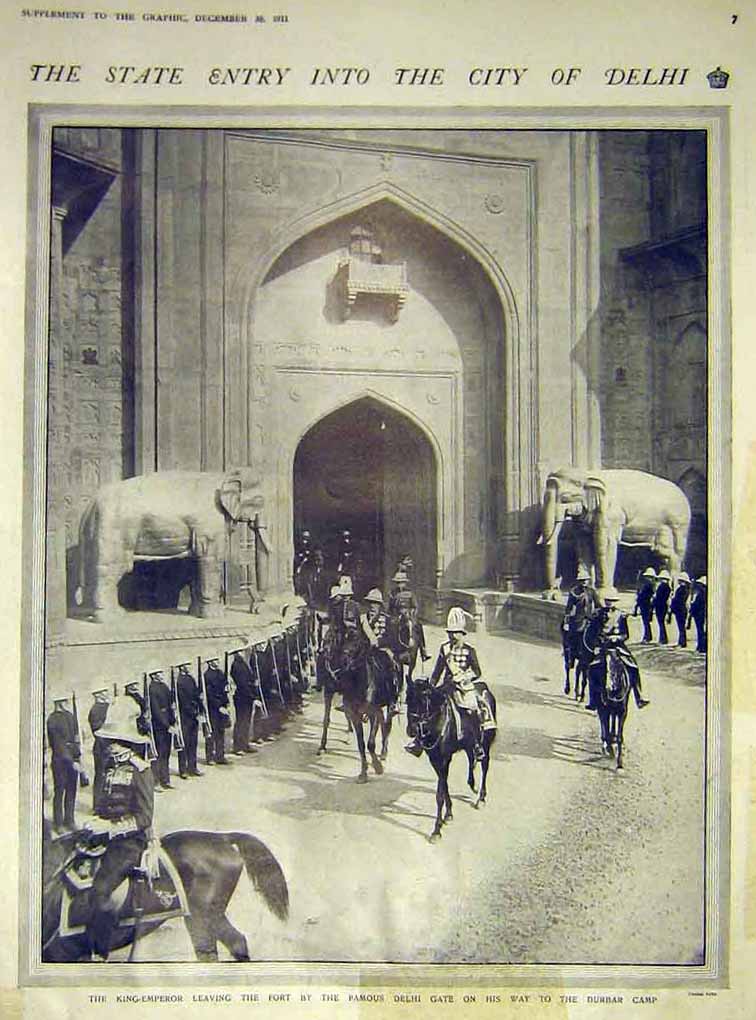
"The King-Emperor leaving the Fort by the famous Delhi Gate on his way to the Durbar Camp," from The Graphic, 1911
Source: ebay, Mar. 2006
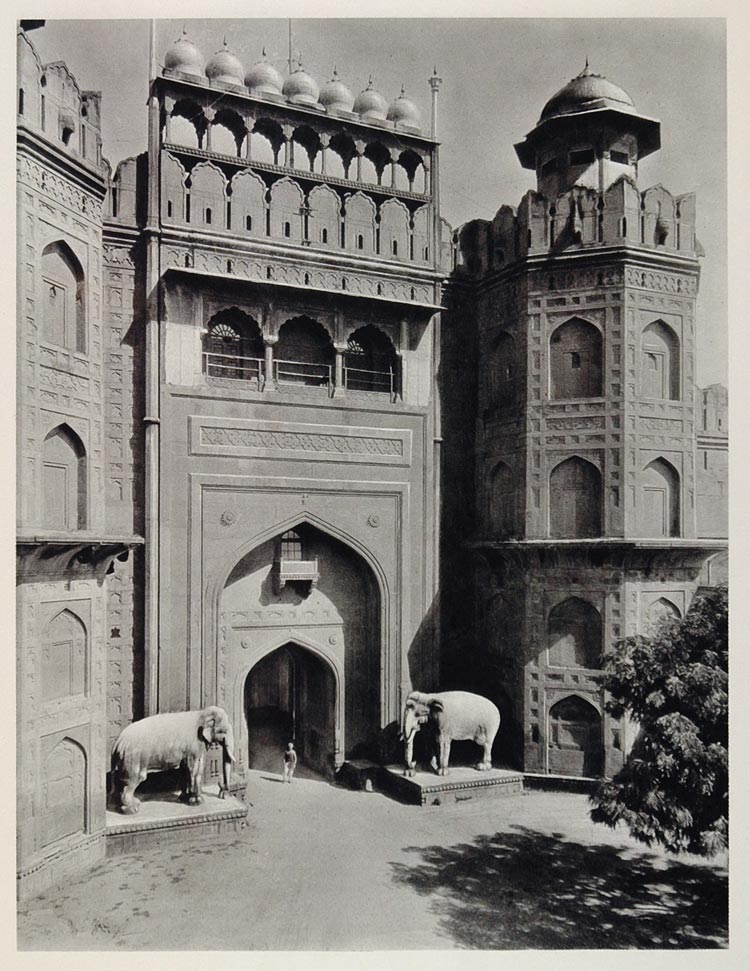
A photogravure by Martin Hurlimann, 1928
Source: ebay, Feb. 2007
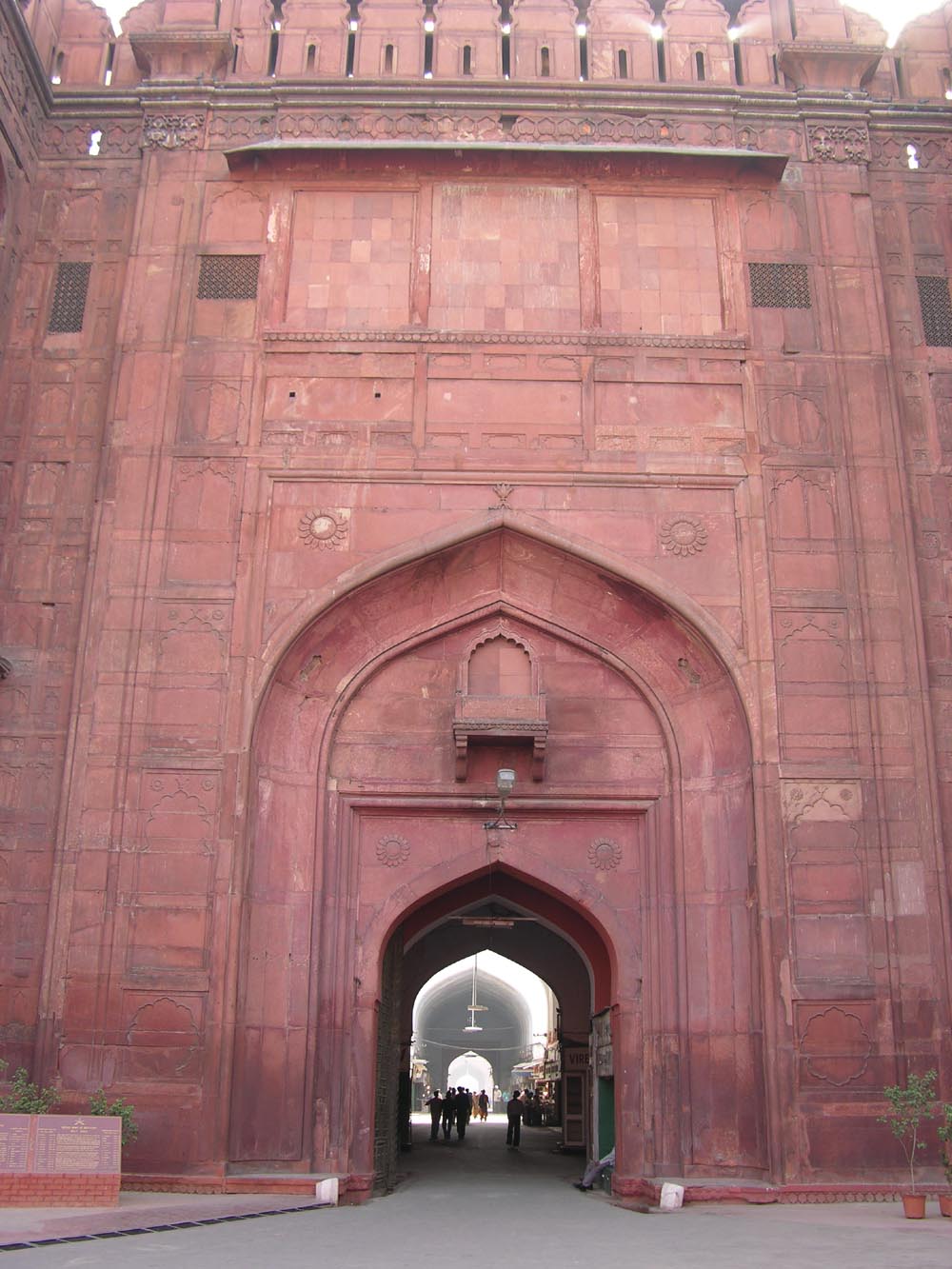
Delhi Gate as it looks today
Source: http://rubens.anu.edu.au/raider6/india/delhi/shahjahanabad/red_fort/walls_and_gates/lahore_gate/
(downloaded Mar. 2006)
The two principal streets of the city, which terminated at the Royal Square [before the Lahori Gate of the Fort], are thus described by Bernier: "They run in a straight line nearly as far as the eye can reach; but the one leading to the Lahore Gate [that is, Chandni Chauk] is much the longer." The other extended from the Delhi Gate of the city to the Royal Square. "In regard to houses," writes Bernier, "the two streets are exactly alike, ... there are arcades on both sides; ... they are built of brick and the top serves for a terrace and has no additional building, ... they have not an uninterrupted opening from one to the other, but are generally separated by partitions, in the spaces between which are open shops, where during the day, artisans work, bankers sit for the despatch of their business, and merchants exhibit their wares.... The houses of the merchants are built over these warehouses, at the back of the arcades; they look handsome enough from the street, and appear tolerably commodious within; they are airy, at a distance from the dust, and communicate with the terrace, on which the inhabitants sleep at night; the houses, however, are not continued the whole length of the streets. A few, and only a few, other parts of the city have good houses raised on terraces, the buildings over the magazines being often too low to be seen from the street."
--Carr Stephen, Archaeology and Monumental Remains of Delhi (Author,
1876), pp. 245-46
== Indian Routes index == Indian Routes sitemap == Glossary == FWP's main page ==